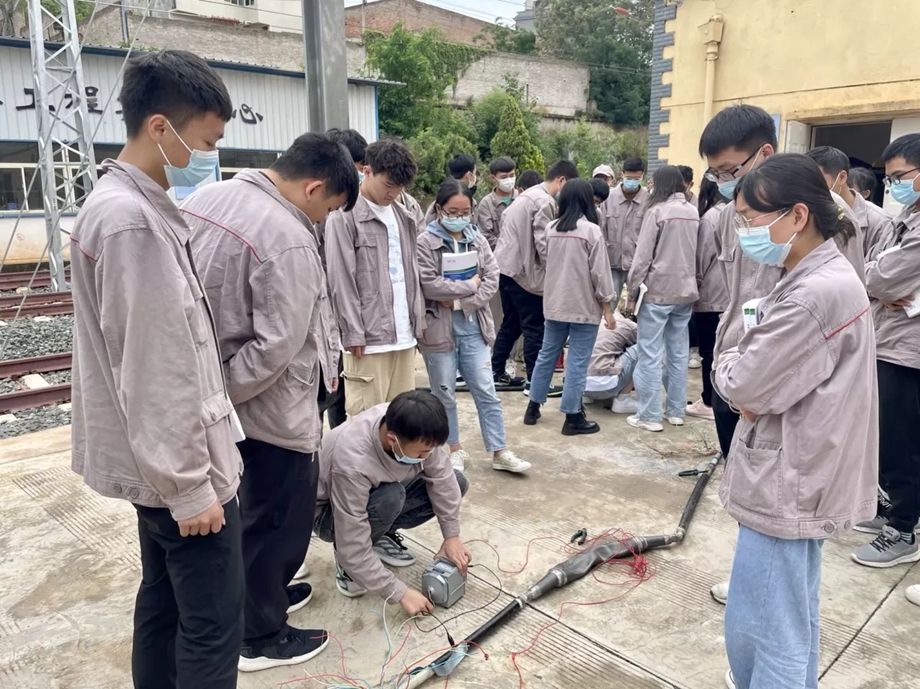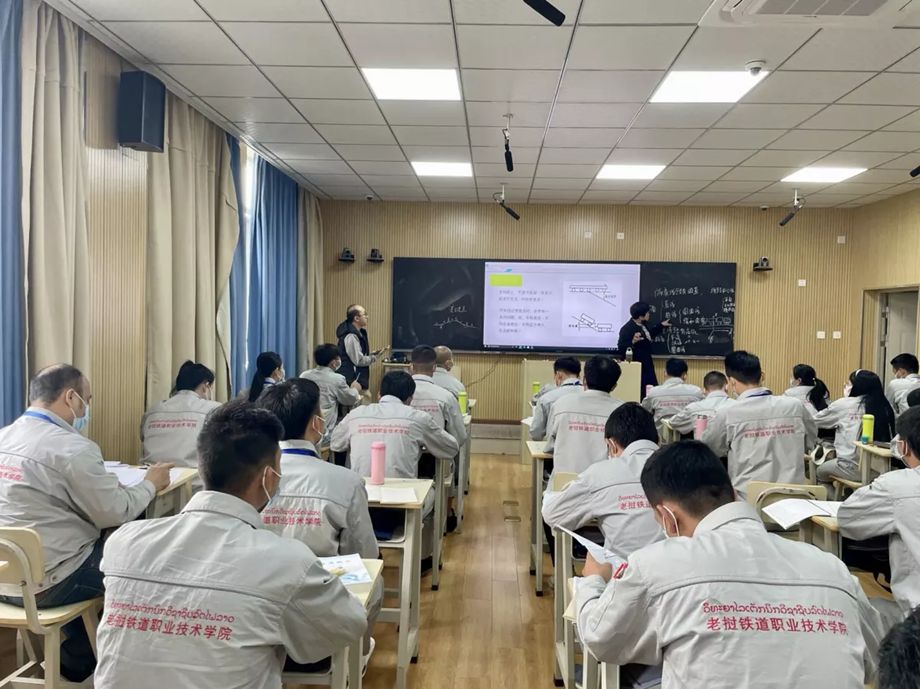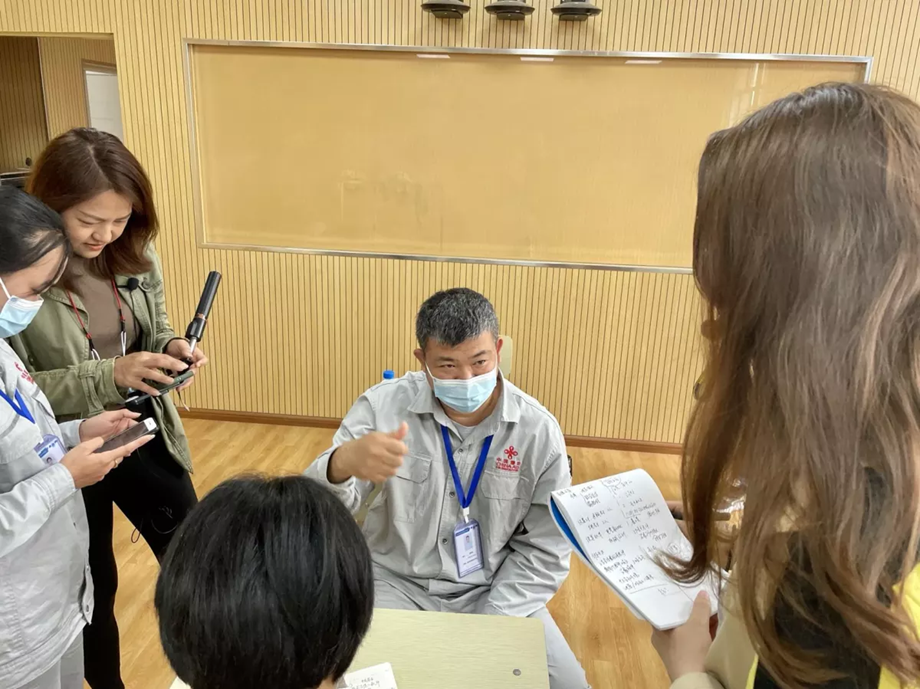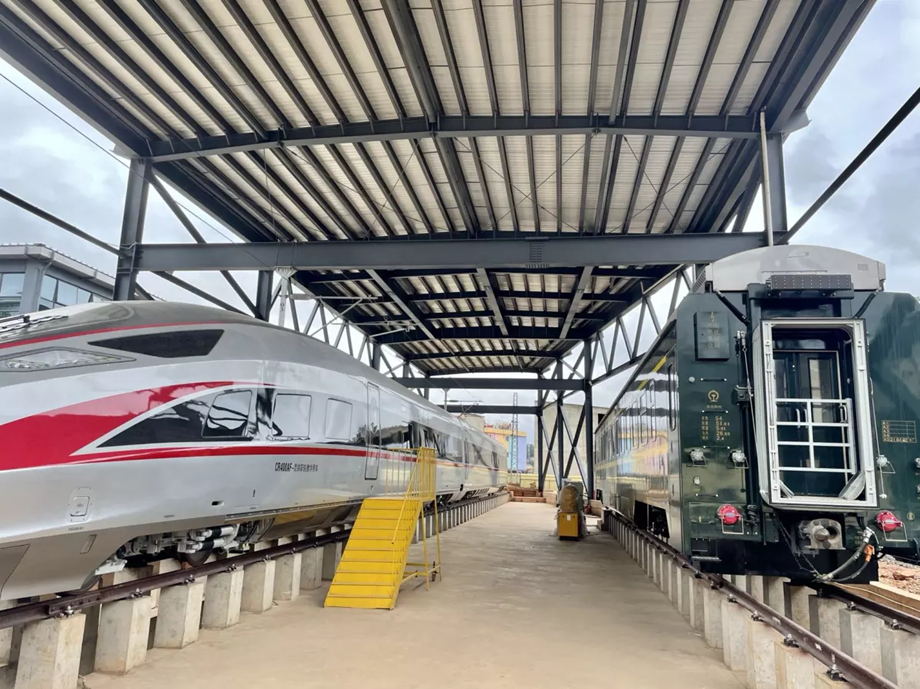China-Laos Railway Sees Huge Talent Demand
Bridging South Asia and Southeast Asia, Southwest China’s Yunnan Province plays a pivotal role in the China-Laos Railway, connecting Kunming, China, with Vientiane, Laos.
“We see a huge talent demand for the China-Laos Railway in the future,” said Duan Yubo, director of the Kunming Railway Vocational Technical College. “Railway-related jobs are outstanding opportunities for local residents in Laos.”
 The college provides a variety of hands-on training. (iChongqing/ Chen Zhan)
The college provides a variety of hands-on training. (iChongqing/ Chen Zhan)
As the starting point of the China-Laos Railway, Kunming cultivates talents, particularly for the Laos railway construction. The program adopts the “2+5” pattern, in which the Ministry of Education of Laos selected 4o students to study in China for two years and in Laos for five years.
Professional courses
“We set up six majors in the college that cover the railway’s main positions,” said Duan. “After the study, they will be able to initially meet personnel needs for the last half of the China-Laos Railway from Mohan to Vientiane.”
These six majors are locomotive, rolling stock, engineering, transportation, signaling, and power supply of the railroad. Duan gave a detailed interpretation of each course. For example, in the railroad power supply major, students need to learn how the power supply for the railways comes from, even its equipment and control, to ensure the energy supply of the trains.
 Students from Laos are studying at the Kunming Railway Vocational Technical College. (iChongqing/ Chen Zhan)
Students from Laos are studying at the Kunming Railway Vocational Technical College. (iChongqing/ Chen Zhan)
“These six majors are trained for the key positions of the railway, including daily management, operation, maintenance, inspection, vehicle preparation, locomotive driving, and others,” said Duan. “It’s a good contributor to Laos employment and economy as well.”
Language learning
“It’s hard to learn Chinese!” said a student from Laos. “I have to study six hours a day which was very stressful, but I am determined to study hard.”
In addition to the professional courses, the program is linked with language learning, which is the most considerable difficulty encountered by the group. Many students talked about the level 4 exam of the Chinese Proficiency Test (HSK4), the international standardized test of Chinese language proficiency for non-native speakers, as the most significant headache they will take in August.
 The Kunming Railway Vocational Technical College teacher accepted an exclusive interview on May 24. (iChongqing/ Chen Zhan)
The Kunming Railway Vocational Technical College teacher accepted an exclusive interview on May 24. (iChongqing/ Chen Zhan)
“We took the language into account as early as the program feasibility study,” Duan said. “We have hired several teachers from the Yunnan Chinese Language and Culture College to give Chinese classes.” Since there were no railroads in Laos before, there are few words related to the railway in their language, so he added that the translation is the most challenging part of the program.
As they now use Chinese teaching materials, the college plans to adapt to a Lao language textbook based on the current classes and practices, providing a reference for future use.
Hands-on training
Besides the theoretical classes, the most exciting thing for Lao students is the hands-on training. Not only the real high-speed trains, but the college also hosts railway tunnels, bridges, stations, and other facilities built in a ratio of one to one.
 The college hosts real high-speed trains and other facilities built in a 1:1 ratio. (iChongqing/ Chen Zhan)
The college hosts real high-speed trains and other facilities built in a 1:1 ratio. (iChongqing/ Chen Zhan)
“Through realistic and simulated practical training, they can better master the recent technology of Chinese railway, and bring this knowledge back to Laos in the future,” said Duan.
Worth about 200 million yuan (about 29.7 million U.S. dollars), and the practical base covers the railway’s primary centers, which correspond to six majors, so the theory and practice can be perfectly integrated there.
Editing by Wang Qing